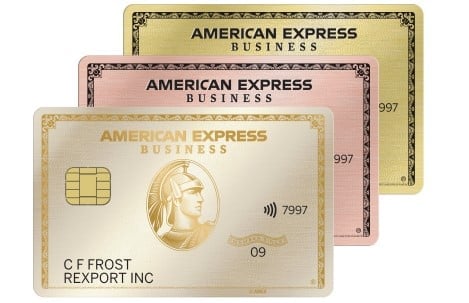Business Loan Calculator
Use NerdWallet’s business loan calculator to estimate monthly payments based on your loan amount, loan term and APR.
Many, or all, of the products featured on this page are from our advertising partners who compensate us when you take certain actions on our website or click to take an action on their website. However, this does not influence our evaluations. Our opinions are our own. Here is a list of our partners and here's how we make money.
Estimate payments to understand the cost of a business loan
Over the course of the loan, expect to pay
$0.00/mo
Payment breakdown
Get personalized small-business loan rates to compare
with Fundera by NerdWallet
Concerned about tariffs?
Many small-business owners are under increased economic stress and uncertainty following the latest tariff announcements. NerdWallet is here to help you find answers for whatever you're looking for. Here are some resources to help you get started:
Need emergency funding? Consider a business line of credit.
Looking for fast access to working capital? Discover the best working capital loans.
Want tips on how to mitigate the impact of tariffs? Read our guide.
Before committing to a small-business loan, you should calculate the monthly and overall costs you’ll be paying to make sure you’re getting the most affordable and best loan for you.
How to use the business loan calculator
NerdWallet’s business loan calculator helps you estimate monthly payments and total amount of principal and interest you’ll pay over the life of a loan. Play around with the numbers to see how different repayment scenarios change your results.
1. Enter your information
Here’s what you’ll enter:
Loan amount. This is the total amount you plan to borrow.
Loan term. Enter your repayment term in months.
Annual percentage rate (APR). The total cost of borrowing money. It includes interest rate and fees, over the life of your loan. If you don’t know the loan’s APR, you can enter the interest rate here instead. If your lender gives a factor rate, you can calculate your interest rate by multiplying the factor rate by your total loan amount (see our example below).
How much do you need?
We’ll start with a brief questionnaire to better understand the unique needs of your business.
Once we uncover your personalized matches, our team will consult you on the process moving forward.
2. Calculate your results
Once you hit “calculate,” our tool will automatically generate the following results (feel free to adjust the numbers to explore different loan scenarios):
Monthly payment. The fixed amount you’ll repay each month. It includes principal, interest and fees.
Total interest paid. The total amount a lender is charging you for a loan. If you repay the loan early, you might be able to save on interest — provided your lender doesn’t charge a prepayment penalty.
Total payments. The sum of all payments made on the loan, including the amount you borrowed, plus interest and fees.
Amortization schedule. This shows how much of your monthly (or annual) payments will go toward your principal and how much will go toward interest. As you continue to repay your loan over time, your monthly payment will remain the same, but your interest payments will get smaller and more of your payment will go toward your principal.
Types of business loans
Small-business loans are available from banks, credit unions and online lenders. Terms, rates and qualifications vary by lender. Here are some of the most common types of business loans:
SBA loans. The United States Small Business Administration works with banks and other financial institutions to provide small-business loans that have low interest rates and long repayment terms. However, SBA loans are slow to fund and can be difficult to qualify for.
Term loans. Term loans typically range from three to 24 months for a short-term loan and up to 10 years or longer for a long-term loan. These loans can be used for a variety of purposes, including working capital.
Lines of credit. A business line of credit provides flexible access to cash. You get approved for a specific amount of credit and can draw from your line as needed. You only make payments and pay interest on the money you use.
Equipment financing. Equipment financing is used to purchase equipment. Lenders often finance up to 100% of the value of the equipment. These loans are self-collateralizing, meaning the equipment itself serves as collateral for the loan.
Commercial real estate loan. A commercial real estate loan is used to buy, build, refinance or renovate a commercial property, like a warehouse, office building or retail store. Standard commercial real estate loans work a lot like a personal mortgage, but tend to have shorter repayment terms and higher upfront costs.
Alternative ways to finance your business
If you can’t meet traditional business loan requirements, consider these options instead:
If you don’t need a lot of money, business grants provide free money to startups and operating businesses — either by giving you a lump sum, or reimbursing you for certain expenses. They can be difficult to research and apply for, and grant amounts typically aren’t as high as loans, but it can be worth it if you’re able to get free money for your business, even in small amounts.
If your business is newer, personal business loans are a good option if your business can’t qualify for traditional financing. Lenders consider your personal credit score and income instead of your business history.
If you want a revolving source of capital, business credit cards can be easier to get than a small-business loan. Business credit cards tend to have relatively low credit limits, but you can earn rewards for your spending, such as cash back or travel points.
If you have poor personal credit and lack collateral, invoice factoring and invoice financing both involve the use of unpaid customer invoices to access capital. With factoring, you sell the invoices to a factoring company that then collects the money from your customers. With invoice financing, the unpaid invoices serve as collateral on a cash advance. You still collect payment on the invoices from your customers, and then you pay back the loan.
» MORE: Compare the best startup business loans










